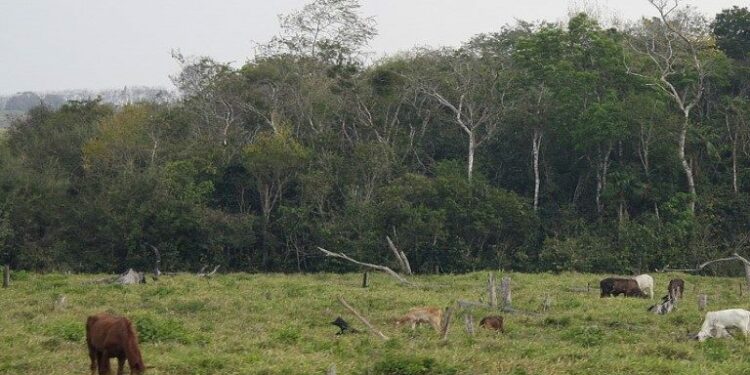“There are going to be a lot of affected wild animals,” said Dr. Jorge Rojas-Jiménez, a wildlife veterinarian specializing in tapirs in Costa Rica. “The problem is that we’re only seeing the animals that arrive at rescue centers, or when people find them. We really can’t know for sure what the total impact will be.”
Now that the screwworm has entered Guatemala, officials are concerned it might reach the Maya Biosphere Reserve on the country’s northern border with Mexico. The reserve has suffered from a “lack of governance,” according to multiple environmental NGOs, with out-of-control forest fires decimating thousands of hectares of rainforest at the hands of illegal cattle ranchers.
There are believed to be 50,000 illegal cattle in the country, according to the National Council for Protected Areas.
To stop the fly from entering Mexico and the US, governments will release sterile males into the air to stifle reproduction. But conservation groups are also lobbying them to stop the problem at its source, increasing restrictions on illegal cattle ranching and closing the border. In the long run, that could be what helps save multiple protected areas.
“If we were to eliminate some of that [cattle] demand, it would have a trickle-down effect all the way into the forest that we care about the most,” Radachowsky said.
Banner image: Cattle graze on deforested land in northern Guatemala. Image by Rhett A. Butler.
See related from this reporter:
Honduras taps armed forces to eliminate deforestation by 2029. Will it work?
FEEDBACK: Use this form to send a message to the author of this post. If you want to post a public comment, you can do that at the bottom of the page.
![]()
Source link : http://www.bing.com/news/apiclick.aspx?ref=FexRss&aid=&tid=67338b1049124bcf85c48295d7bb8f65&url=https%3A%2F%2Fnews.mongabay.com%2F2024%2F11%2Fa-deadly-fly-is-spreading-through-central-america-experts-blame-illegal-cattle-ranching%2F&c=3505327458429598254&mkt=en-us
Author :
Publish date : 2024-11-12 04:05:00
Copyright for syndicated content belongs to the linked Source.












